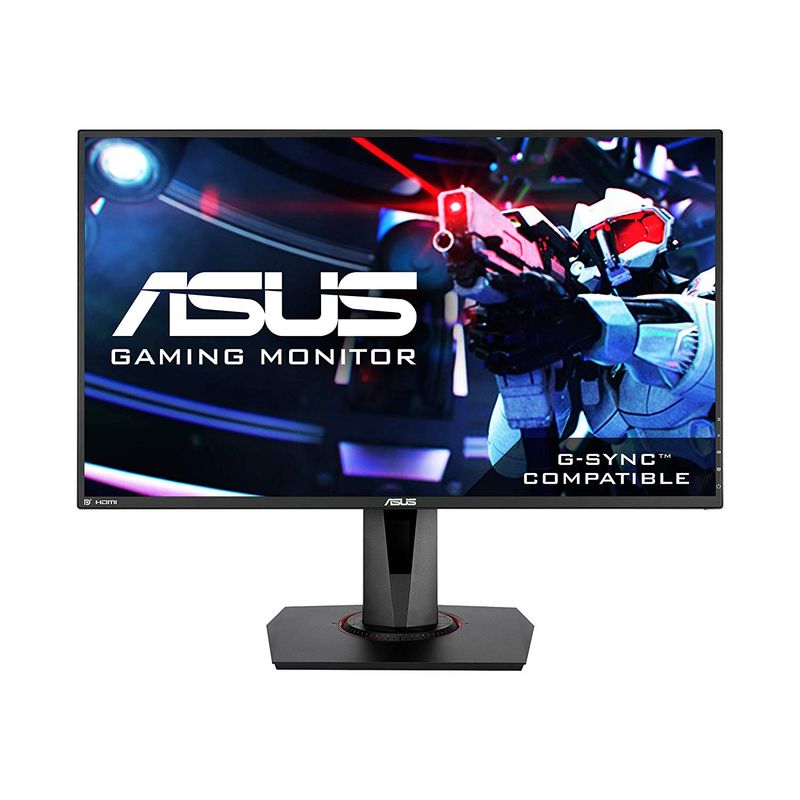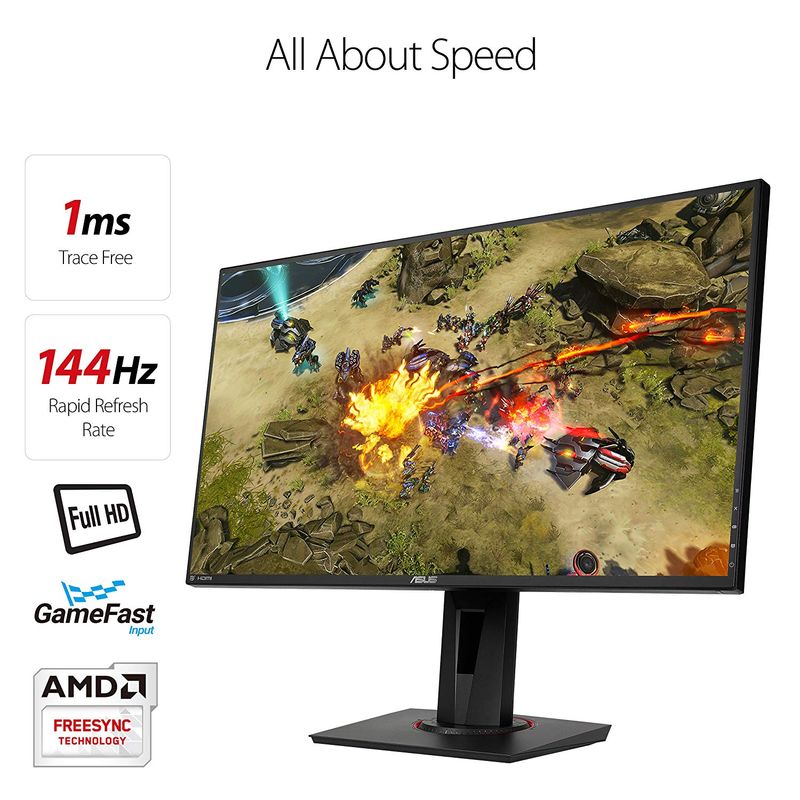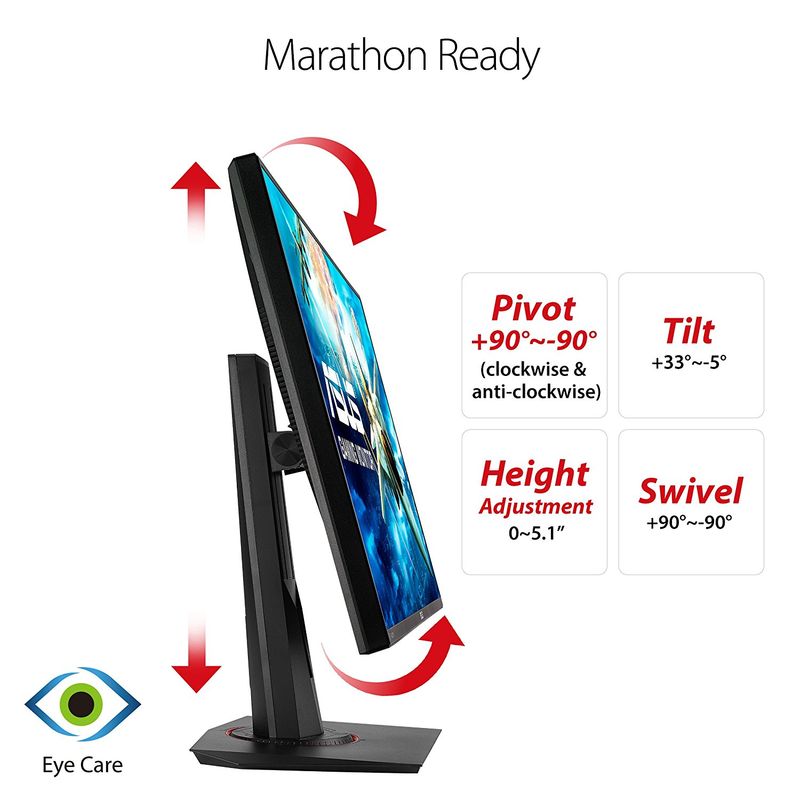Asus VG278Q Review: This Could Have Been the Best Budget High Refresh Rate Monitor
Posted on April 28th, 2019

The Asus VG278Q is a standout amongst the most appealing high-invigorate screens this year because of its tasteful value, determinations, and its ensured G-Sync similarity. Its IPS kin, the VG279Q posted incredible outcomes which can contend with higher-layered contributions at an exceptionally low cost. How about we see whether the TN-prepared Asus VG278Q offers a comparable value for the money involvement with an aggressive edge.
Looks and Feel of the Monitor
It's hard to tell the Asus VG278Q separated from its IPS partner since both offer precisely the same plan and tasteful. The gadget is done with the brand's well-known, yet fulfilling matte dark with an unpretentious surface that feels pleasant. The screen isn't sans bezel, however there are slight board outskirts which are subtle when gaming or working.
What of the reliable things we cherish about Asus screens like the VG278Q is the incredible form quality which is ensured even on their lower level models. The packaging's creases and edges are spotless cut, so you won't see any uneven holes or sharp burrs. The bureau itself feels exceptionally tough and it doesn't make squeaking sounds when you endeavor to modify the review edge.
It's additionally an immense in addition to that the Asus VG278Q utilizes the typical OSD control format you'd find on their ROG Swift contributions. There is a multidirectional joystick at the back alongside four hotkeys for your benefit, so controlling the settings ought to be simple as peas. A remote would be a decent touch for gamer-driven variations, however it isn't that fundamental for day by day use.

The Asus VG278Q is built comparably to set up items like the Asus PG278QR, so you can hope to appreciate a truly adaptable stand. The component enables clients to tilt, swivel, turn, and alter the screen's stature, so the TN's smaller survey points ought not be a worry. You can likewise swap out this part with a VESA mount as long as it has a 100 x 100 mount.
Asus modernized its ROG and Strix gaming screen structures, yet we generally wind up leaning toward this exemplary form over the helix remain with digital examples treatment. This usage essentially devours less space, in addition to the item won't look prominent in a progressively proficient condition. You don't get ROG logos or lighting with this model, yet that issues less contrasted with the real execution it can give.
The Asus VG278Q is G-Sync good, yet it does as such by means of a product level, not at all like the PG278QR which has a full G-Sync module inside. This likewise implies you don't get the availability confinements forced by the exclusive FPGA controller. You will discover a DisplayPort 1.2, HDMI 1.4, and DVI-DL space at the back alongside double 3.5mm jacks for sound information and yield.

There are no USB openings for peripherals, yet there is a couple of 2-Watt speakers for fundamental sound appreciation. To be perfectly honest, we lean toward the previous since the constructed ins won't get much use contrasted with gaming earphones or 2.1 speakers.
Panel and Results
The Asus VG278Q sports a 27-inch TN board with a 1920 x 1080 goals, 144Hz revive rate, and 1ms reaction time. A run of the mill 1000:1 differentiation proportion is additionally recorded, alongside an additional punch 400 compact disc/m2 backdrop illumination. This model puts accentuation on spryness more than everything else, so as it were, the VG279Q will look better with its preference in dynamic quality.
One of the promptly observable qualities of the Asus VG278Q is its lower pixel thickness which we know is an issue for some clients. The free pixel pitch mellows pictures, making spiked or grainy articles and edges. Be that as it may, we know some E-Sports fan who incline toward this sort since it makes littler items at a separation like a looking head increasingly noticeable.
The Asus VG278Q may have a couple of hindrances over its IPS partner, however its apro with regards to shading exactness. The TN module can deliver 100% of the sRGB extent with a DeltaE of just 1.5 which discloses to us that you can utilize the presentation for altering purposes also. This outcome is fabulous for a TN board since many battle with precision because of less fortunate shading temps.
The complexity proportion for the Asus VG278Q at around 30% brilliance falls around a normal of 900:1 which isn't the most noteworthy we've recorded outside VA variations, yet sufficient for a TN screen. The blacks will show up somewhat grayish in dim rooms, however that is a little cost to pay for the additional lift in pixel reaction. It's likewise significant that the backdrop illumination just goes up to 375 compact disc/m2, yet even that is unreasonably brilliant for expanded use.
The main thing baffling about the Asus VG278Q is it is deficient with regards to gamma controls for refined imaging changes. The greater part of the presets seem as though they are nearer to 2.3, yet the sRGB mode sits at the perfect 2.2. The terrible news is that a portion of these presets lock out certain parts of the OSD, so you are screwed over thanks to Asus' default alignment for that given channel.

nel consistency, then again, isn't an issue for the Asus VG278Q since its equally lit because of a most extreme splendor difference of just 6%. There are no holes, so you won't see blurring or uneven hues on certain spots of the showcase. Every quadrant fell in accordance with a change of just Delta E 1.4, so you won't see any inconsistencies in diversions or motion pictures.
One of the qualities of the Asus VG278Q is its snappier pixel reaction time realized by TN innovation's capacities. Foggy spots are as of now negligible as a matter of course, however the item incorporates an overdrive setting called Trace Free and ELMB. We suggest utilizing the half dimension with ELMB turned on for the best outcomes in quick paced titles.

The Asus VG278Q is a FreeSync screen with an utilitarian scope of 40Hz to 144Hz, yet it is additionally one of the initial twelve to work with Nvidia's G-Sync similarity include. Info slack midpoints at 11ms, so there are no postponements or "de-matched up" occurrences in amusements where speed and timing are critical.